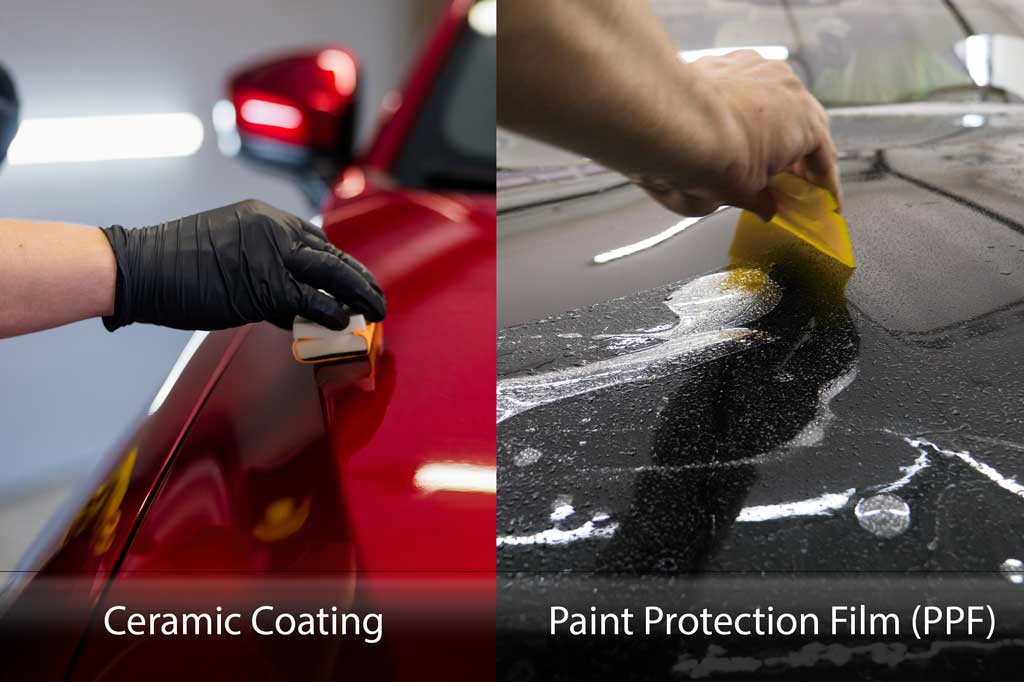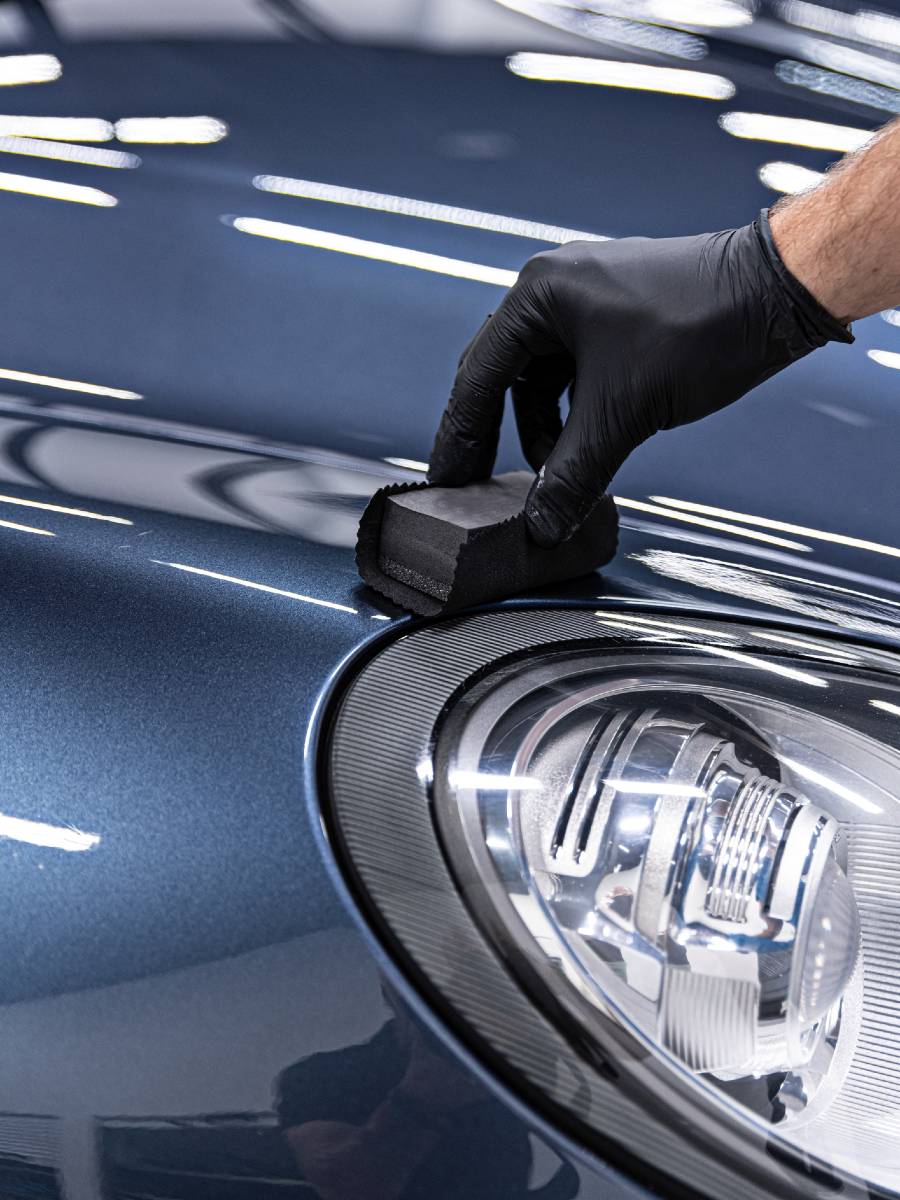Check Out the Top Myths Concerning Ceramic Coating and Get the Facts
Check Out the Top Myths Concerning Ceramic Coating and Get the Facts
Blog Article
The Duty of Ceramic Finish in Protecting Your Automobile's Paint From Environmental Damage
Ceramic covering has arised as an advanced solution for automobile owners seeking to protect the stability of their automobile's exterior. By developing a robust chemical bond with the paint, this advanced modern technology supplies a formidable barrier against different environmental hazards, such as UV rays, acid rain, and pollutants. Nonetheless, understanding the detailed benefits and the intricacies of the application process is crucial for maximizing its performance. As we check out the nuances of ceramic finish, it ends up being apparent that the option to apply this protective action can substantially influence your automobile's durability and aesthetic.
What Is Ceramic Finish?
Ceramic coating is a sophisticated fluid polymer related to the outside surfaces of a vehicle, designed to offer a durable layer of defense for the paint. This ingenious remedy creates a chemical bond with the lorry's factory paint, developing a resistant and hydrophobic shield. The finish includes nanoparticles that fill in the microscopic flaws in the paint, causing a smooth surface that enhances gloss and radiate.
Commonly, ceramic coatings are readily available in different solutions, enabling for various levels of protection and long life. While some products can last for a number of months, others supply defense for several years, relying on the thickness of the application and ecological variables. The application process needs precise preparation, including washing, sanitizing, and polishing the lorry's surface area to guarantee optimal bond of the finish.

Benefits of Ceramic Coating
One of the key benefits of using a ceramic layer is the outstanding protection it uses to vehicle paint. This innovative finishing forms a durable layer that guards the automobile's surface area from a variety of environmental risks, including UV rays, acid rain, bird droppings, and tree sap. By providing this robust defense, ceramic coatings dramatically decrease the threat of fading and etching, preserving the car's aesthetic charm in time.
Along with security, ceramic finishes are renowned for their hydrophobic residential or commercial properties, which ward off water and dust, making it much easier to maintain a clean lorry. This self-cleaning result decreases the frequency of washing, conserving both time and sources. Ceramic coverings boost the depth of the paint's gloss, resulting in a lively and sleek look that elevates the general appearance of the automobile.
Another notable advantage is the longevity of ceramic finishes. Unlike typical waxes or sealers that call for constant reapplication, ceramic coatings can last numerous years, providing an affordable option for cars and truck proprietors looking for lasting security. Generally, purchasing ceramic coating causes boosted sturdiness, minimized upkeep, and sustained aesthetic appeal for automotive paint.
Just How Ceramic Coating Functions
A ceramic coating runs via a chemical bonding process that creates a safety layer on the vehicle's paint surface. This cutting-edge solution utilizes advanced nanotechnology, where microscopic fragments of silica are suspended in a liquid kind - ceramic coating. Upon application, these bits bond with the factory paint, forming a resilient and hydrophobic layer that boosts the lorry's surface
The primary part of ceramic finishes, silicon dioxide (SiO2), adds to the layer's stamina and durability. When treated, the covering changes into a hard, glass-like finish that shields the paint from ecological pollutants such as dust, UV rays, bird droppings, and tree sap. This molecular bond causes a surface that is not just immune to scratches yet also simpler to cleanse, as dust and gunk are less most likely to adhere.
Additionally, the hydrophobic buildings of ceramic finishes cause water next to bead and slide off, lowering the possibilities of water places and natural resource. This safety obstacle successfully prolongs the life of the paint and keeps the lorry's aesthetic allure, offering automobile proprietors a resilient option for paint defense.
Application Refine of Ceramic Finishing
When thinking about the application of ceramic layer, prep work is vital to straight from the source attaining ideal outcomes. Any type of scrapes or flaws need to be resolved at this stage, as the layer will bond with the surface underneath.

Ceramic layer is after that used in little areas, generally making use of an applicator pad. It is crucial to my sources operate in even strokes, ensuring consistent insurance coverage. The coating must be allowed to cure for a defined time, which can vary depending upon the item made use of. After the first application, a high-quality microfiber towel is utilized to buff the surface area, improving gloss and guaranteeing a smooth surface. The vehicle must be left to cure in a regulated setting to permit the layer to fully bond with the paint.
Long-Term Upkeep and Treatment
Achieving an effective ceramic layer application establishes the structure for lasting protection, yet appropriate upkeep is crucial to protecting its advantages. Normal cleaning is necessary; utilizing a pH-neutral cars and truck shampoo will aid keep the finish's stability without causing damages. Stay clear of automated cars and truck cleans that use rough products, as they can compromise the finish's surface area.

Moreover, applying a ceramic finish maintenance spray can enhance the existing layer, providing an added boost in defense and shine. It's recommended to perform this every 3 to 6 months, depending on environmental exposure.
Last but not least, car parking in shaded locations or utilizing cars and truck covers can stop long term exposure to hazardous UV rays and ecological contaminants, even more expanding the life of your ceramic layer. By adhering to these upkeep methods, you can ensure your vehicle's coating continues to be safeguarded and visually appealing for many years to find.
Conclusion
In summary, ceramic coating acts as an essential protective measure for vehicle paint, properly shielding lorries from a range of environmental hazards. Its ability to produce a robust hydrophobic obstacle not only improves aesthetic appeal yet also dramatically lowers the regularity and intensity of upkeep required. The lasting nature of this advanced polymer underscores its value in preserving lorry stability and look, inevitably adding to a more aesthetically enticing and resilient automotive surface.
Ceramic coating is a sophisticated fluid polymer applied to the exterior surfaces of a lorry, made to supply a long lasting layer of defense for the paint. Ceramic layers boost the depth of the paint's gloss, resulting in a vivid and polished appearance that elevates the general look of the automobile.
A ceramic layer runs with a chemical bonding procedure that creates a protective layer on the automobile's paint surface.The major part of ceramic layers, silicon dioxide (SiO2), contributes to the finish's toughness and strength.In recap, ceramic layer offers as a crucial safety procedure for auto paint, effectively shielding lorries from a range of environmental threats.
Report this page